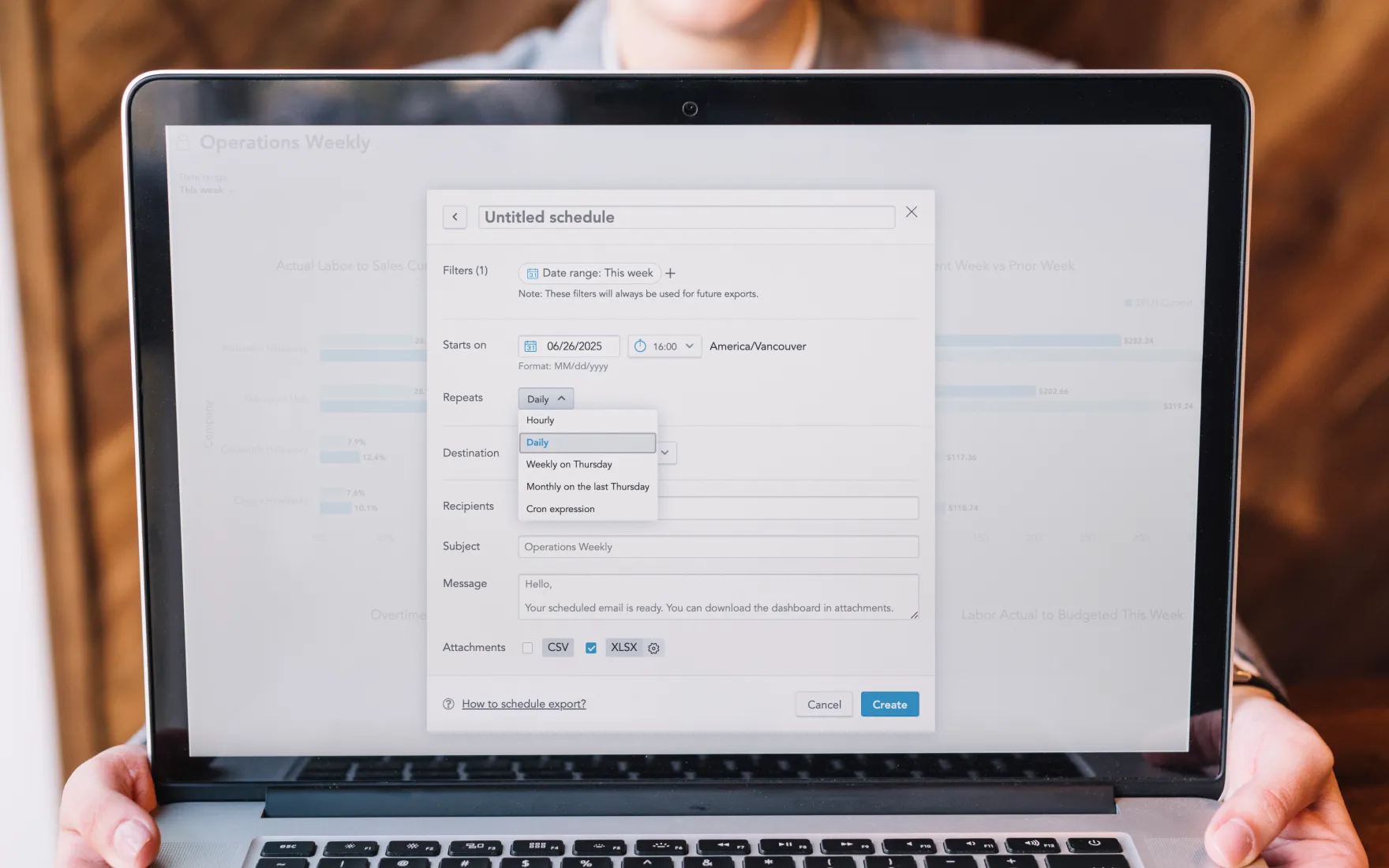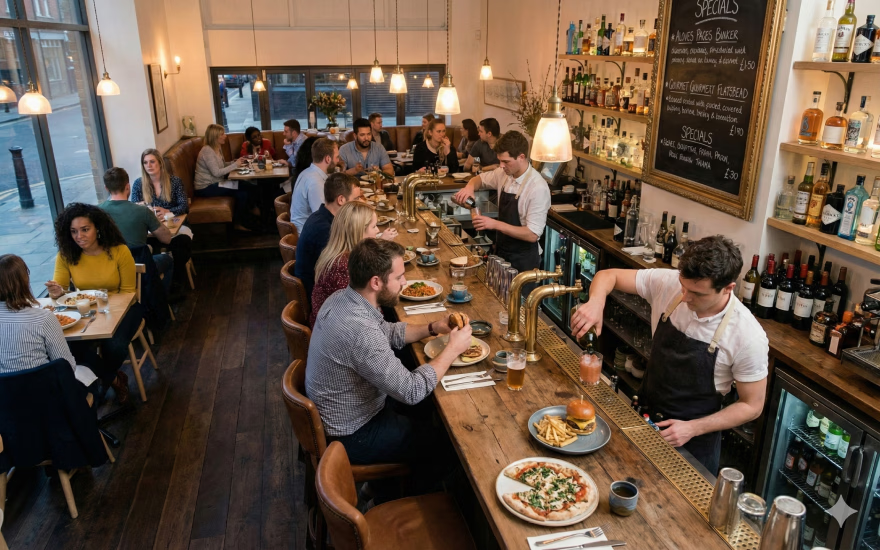How Can Restaurants Prepare Staff for Back-to-School Season? 7 Employer Strategies That Work

As summer winds down and backpacks come out, student employees begin to shift their focus from serving tables to hitting the books. For restaurants that rely heavily on student and seasonal labor, the back-to-school season brings a wave of challenges — unexpected schedule changes, staffing gaps, and increasing labor costs. But with the right strategies in place, restaurant owners and operators can treat fall as a time of workforce renewal rather than disruption.
So, how do restaurants prepare for back to school without compromising service quality or overloading full-time staff? By utilizing smart labor forecasting, agile scheduling, and the power of workforce technology, operators can create a smoother transition that keeps both customers and team members happy all season long.
Whether you're operating in a bustling college town or simply employ a student-heavy team, this guide breaks down seven proven strategies to help your restaurant adapt to seasonal labor changes efficiently.
What Challenges Do Restaurants Face During the Back-to-School Season?
The start of the school year signals more than just classroom routines — it marks a seasonal labor shift that can significantly impact restaurant operations. For businesses that employ student workers, the challenges spike in August and September when academic commitments reduce workforce availability.
Common issues include:
- Reduced labor supply: According to the National Restaurant Association, over 30% of restaurant workers are students who adjust or leave their roles during the back-to-school season.
- Irregular availability: Classes, exams, and extracurriculars limit when student employees can work, affecting shift stability.
- Higher turnover: The U.S. Bureau of Labor Statistics consistently shows labor churn rises during late summer and early fall, increasing recruitment pressure.
- Increased burnout: Fewer team members mean more overtime, heavier workloads, and a greater risk of staff fatigue — all of which can impact service quality.
For restaurants in campus-adjacent locations or cities with a significant Gen Z workforce, the shift can feel abrupt. Without proper planning, it often leads to inconsistent coverage, last-minute call-outs, and operational strain during peak dining hours.
How Can You Forecast Labor Needs Effectively in the Fall?
Effective labor forecasting is a restaurant’s best defense against back-to-school disruptions. By taking a data-backed approach, operators can identify future labor gaps before they happen and prepare accordingly.
How to Use Data to Predict Fall Staffing Gaps
Start by reviewing historical data — including past fall schedules, sales patterns, and labor reports. Look back at the previous two to three autumns to spot recurring trends such as:
- Increased guest volume during football weekends or parent visits in college towns
- Slower lunch traffic during weekdays when students are unavailable
- Surge during after-school hours or promotions like “kids eat free”
Combine these insights with your POS data to predict high-traffic days and staff accordingly. Use restaurant scheduling software that connects with sales and attendance trends to estimate hours per labor role — from front-of-house to kitchen — ensuring your most critical shifts never go uncovered.
What Scheduling Strategies Work Best for Student Employees?
Scheduling flexibility is key to retaining student workers during the school year, but managing this flexibility effectively requires the right systems.
Best Practices for Weekly Shift Planning in Fall
- Align with school calendars: Familiarize yourself with local semester schedules and exam periods. This helps avoid conflicts before they arise.
- Offer predictable shifts: While students may have limited availability, they often appreciate consistency — like working Tuesday and Thursday evenings or weekends only.
- Enable shift swapping: Allow approved workers to swap or pick up shifts from a pool so managers aren’t manually filling last-minute holes.
Tools that Support Schedule Flexibility
Using mobile-first employee self-service tools — such as those offered by Push Operations — empowers staff to input availability, request time off, and swap shifts with ease. These tools also help managers avoid scheduling workers during known blackout periods like midterms or sporting events, fostering a more reliable and responsive workplace.
How Can You Retain Seasonal and Part-Time Workers During School Months?
The fall season tests retention. Successfully holding onto student employees during this period depends on how well you adapt to their evolving needs and reinforce a culture of value.
Key tactics to improve seasonal retention include:
- Acknowledging academic priorities: Offering flexibility around exam weeks and assignment deadlines demonstrates empathy. Consider a policy that allows shift adjustments during finals in exchange for advance notice.
- Ongoing development: Training opportunities — such as mentorships, cross-training between stations, or leadership skills — keep staff engaged, especially those looking to return post-graduation.
- Public recognition: Simple gestures like recognizing birthdays, school achievements, or work anniversaries go a long way toward boosting morale.
- Seasonal rehire incentives: Let dependable workers know ahead of time that they will be prioritized for shifts during winter or summer breaks.
According to the Deloitte Global 2023 Gen Z Report, Gen Z employees highly value work-life balance and flexible shift structures, often more than salary. Programs that honor their out-of-work commitments build trust and loyalty, leading to stronger retention during turbulent times.
What Are Effective Communication Tactics for a Student Workforce?
Student workers manage multiple communication inputs — professors, peers, and now, managers. For restaurants, streamlined internal communication is critical to keeping schedules on track and expectations clear during the fall season.
How to Use Clear Communication to Improve Fall Retention
- Centralize messaging: Use scheduling software with built-in message boards or alerts to distribute weekly updates, policy changes, or shift announcements.
- Create digital templates: Standardize availability forms, time-off requests, and shift swap approvals to prevent confusion and ensure accountability.
- Leverage reminders: Proactively send reminders ahead of semester changes, holiday breaks, or major events, asking employees to re-confirm availability.
A clear communication framework not only prevents no-shows but also reduces manager time spent tracking down last-minute replacements. The result: a more engaged and dependable team.
Should You Hire Additional Staff Before the School Year Starts?
Hiring before the academic year kicks off is a smart move for restaurants anticipating labor shortages. Onboarding new team members in July or early August creates a buffer that allows for training and performance assessments before fall schedules tighten.
Advantages of early onboarding include:
- Faster adaptation: New hires are trained and equipped ahead of back-to-school traffic fluctuations. Existing staff can help with training to make the transition seamless.
- Minimizing churn disruptions: Hiring new staff before your student workers leave for school ensures you maintain a consistent level of service and staff coverage. And don't wait until the first week of classes to add staff, some students may leave early so that they have time to settle into their dorms or unwind before classes start.
Incorporate quick-start guides and micro-training modules to reduce onboarding time without compromising quality, ensuring seamless operations as availability wanes.
How Does Back-to-School Season Affect Labor Costs?
A shrinking staff pool often translates into rising labor expenses. Back-to-school season not only affects staffing availability but also challenges your labor cost strategy if left unchecked.
How to Track Labor Cost Fluctuations in the Fall
- Overtime pay: Fill-ins and extended hours for limited staff increase weekly payroll totals.
- Last-minute scheduling inefficiencies: Uncovered shifts can lead to using premium staff in less efficient ways or losing customers due to long wait times.
Technology’s Role in Managing Labor Budgets
Labor management platforms help restaurants:
- Track real-time labor spend
- Set wage cost targets as a percentage of revenue
- Forecast weekly and monthly budgets based on accurate availability data
Push Operations’ labor reporting tools facilitate these tasks, letting managers automatically adjust staffing plans to stay within budget, even as availability shifts.
What Role Does Tech Play in Fall Workforce Planning for Restaurants?
Technology is no longer a luxury — it’s essential for labor agility. In the face of seasonal turnover and fluctuating availability, restaurants equipped with tech tools can act quicker and more strategically.
Key tools to leverage include:
- Automated scheduling: Generate optimized shift plans using employee availability and sales trends.
- Shift pools: Let qualified team members pick up open shifts automatically — without a manager needing to intervene.
- Mobile employee self-service: Empower staff to view and adjust their own schedules, submit PTO requests, and message managers directly.
- Payroll integration: Automatically adjust pay for split shifts, overtime, and varied weekly hours without needing manual corrections.
Platforms like Push allow for these functionalities in one place, saving hours of manager time and reducing administrative errors — especially when hours and roles fluctuate weekly.
How Can You Turn Fall Labor Challenges into Growth Opportunities?
Rather than viewing fall as a survival period, restaurants can use this time to rethink labor strategy and build resilience.
Internal Upskilling Ideas for Fall Productivity
- Cross-train team members: Encourage staff to learn multiple stations across front and back of house to stay versatile.
- Promote from within: Use reduced headcounts as a chance to elevate high-performing part-timers into leadership roles.
- Tap into new hiring pools: Consider retirees, returning parents, or hospitality school interns to diversify and strengthen your team.
Shift your perspective: fall doesn’t have to mean chaos. With intentional workforce management, it can become your most agile and innovative season.
Conclusion: Remembering the Basics for Back to School
The back-to-school season doesn’t have to derail your restaurant’s operations. With proactive planning, flexible scheduling tools, and technology-driven labor insights, operators can navigate seasonal labor shifts without sacrificing performance or employee satisfaction.
By understanding the challenges, forecasting based on historical data, and empowering your team with self-service tools, your restaurant can transform a typically turbulent season into a strategic advantage.
Ready to fire up operations? Book a demo with Push to see how smart scheduling, labor reporting, and employee communication tools can help you simplify back-to-school staff planning and reduce seasonal turnover.



